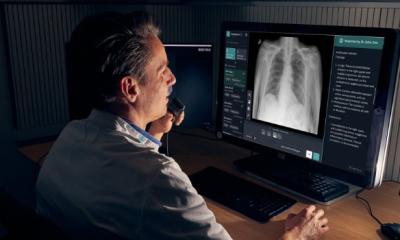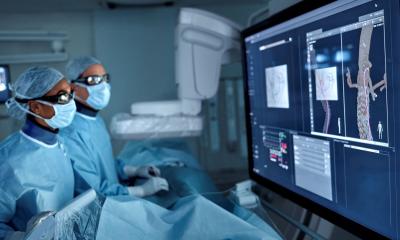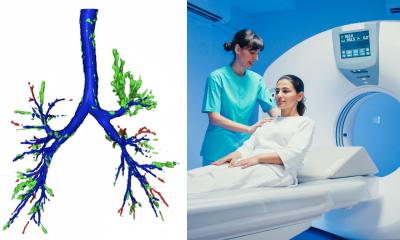News • Statement from ESR and major North American radiology organisations
On the ethics of AI in radiology
Experts in the use of artificial intelligence (AI) in radiology, from many of the world’s leading radiology, medical physics and imaging informatics groups, published an aspirational statement to guide the development of AI in radiology.
The multi-society statement focuses on three major areas: data, algorithms and practice. Simultaneously published in the Journal of the American College of Radiology, Radiology, Insights into Imaging and the Canadian Association of Radiologists Journal, the paper also sought to address and incorporate feedback received from patients, radiologists, regulators and other stakeholders during a comment period that ended in April 2019. The authoring societies include the American College of Radiology (ACR), European Society of Radiology (ESR), Radiological Society of North America (RSNA), Society for Imaging Informatics in Medicine (SIIM), European Society of Medical Imaging Informatics (EuSoMII), Canadian Association of Radiologists (CAR) and American Association of Physicists in Medicine (AAPM).
Image source: Shutterstock/Phonlamai Photo
As a new technology, AI lacks clear standards guiding its development and use. Authors emphasize that ethical use of AI in radiology should promote well-being and minimize harm resulting from potential pitfalls and inherent biases. It should also ensure that benefits and harms are distributed among stakeholders in a just manner that respects human rights and freedoms, including dignity and privacy.
“Radiologists remain ultimately responsible for patient care and will need to acquire new skills to do their best for patients in the new AI ecosystem,” said J. Raymond Geis, MD, FACR, FSIIM, ACR Data Science Institute senior scientist and one of the paper’s leading contributors. “The radiology community needs an ethical framework to help steer technological development, influence how different stakeholders respond to and use AI, and implement these tools to make the best decisions for – and increasingly with – patients.”
Recommended article

Article • AI in diagnostics
Learn like a human, deduce like a machine
Artificial Intelligence (AI) is like a huge blanket that can cover anything from innocuous chess computers to robots which, depending on your viewpoint, could save, oppress or obliterate humanity. However, not every jar labelled AI contains AI. So what is intelligence and can it be created artificially, synthesised like a nature-identical flavouring substance?
"Developments in artificial intelligence represent one of the most exciting, and most challenging, changes in how radiology services will be delivered to patients in the near future,” said Dr. Adrian Brady, Chairperson of the ESR Quality, Safety and Standards Committee and co-author. “The potential for patient benefit from AI implementation is great, but there are also significant risks of unexpected or unplanned harmful effects of these changes. It's incumbent on professionals working in this area to ensure that patient and public benefit and safety are paramount.”
Because of the international nature of AI research, rapid pace of technology development and cross-border deployment of AI software, an ethical framework for AI in radiology was much needed
An Tang
“With the prospect of integration of AI into radiology research and clinical practice, it is incumbent upon the radiology community to develop codes of ethics and practice to guide the utilization of this powerful technology and ensure the privacy and safety of patients,” said co-author Matthew B. Morgan, MD, MS, associate professor and director of IT and Quality Improvement in Breast Imaging, Department of Radiology and Imaging Sciences, University of Utah, and member of the RSNA Radiology Informatics Committee.
"Because of the international nature of AI research, rapid pace of technology development and cross-border deployment of AI software, an ethical framework for AI in radiology was much needed," said An Tang, MD, MSc, FRCPC, chair of CAR's AI Working Group and co-author. "This multi-society statement highlights ethical issues and discusses how to detect and manage them in a manner that is beneficial to patients."
Recommended article

Article • Innovations
Aiding radiologists to stride forward
Growth! New hardware, new software, richer imaging, enhanced communication and image transfer plus artificial intelligence (AI) are all pushing the pace that medical organisations, radiologists and device manufacturers must run to keep up. We spoke with Dr Erik Ranschaert, President of EuSOMII, about today’s changing face of radiology.
“Applications of AI to patient care in imaging have great potential, both for good as well as unintended consequences. The multi-society, multi-nationality statement draws from strengths of the participating organizations to broadly describe ethical challenges and presents several concrete considerations for those implementing and building AI models,” said Marc D. Kohli, MD, associate professor of radiology and biomedical imaging, medical director of imaging informatics for UCSF Health, chair-elect for SIIM and co-author.
“The application of AI tools in radiological practice lies in the hand of the radiologists, which also means that they have to be well-informed not only about the advantages they can offer to improve their services to patients, but also about the potential risks and pitfalls that might occur when implementing them,” said Erik R. Ranschaert, MD, PhD, president of EuSoMII. “This paper is therefore an excellent basis to improve their awareness about the potential issues that might arise, and should stimulate them in thinking proactively on how to answer the existing questions.”
Cynthia McCollough, PhD, FACR, FAAPM, FAIMBE and president of the AAPM emphasized that “in order for AI technology to positively impact human health, it is crucial that robust and reproducible data, methods, guidelines, and tools are developed and made available. As quantitative and interdisciplinary scientists, medical physicists are playing an essential role in the development of these essential resources – we need to ensure that variability and bias are minimized in the data used to answer compelling medical questions.”
Source: European Society of Radiology (ESR)
02.10.2019










